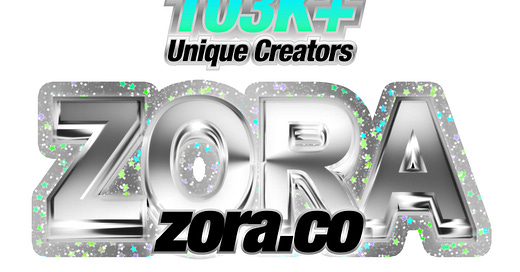Content Coins
There has been a lot of controversy on Twitter over the past week about Zora Coins. I wanted to write a bit about Coins and crypto history and at least offer a perspective on what might work or not work. It’s a worthy experiment, and I’m excited to see how it goes.
To start, I haven’t made up my mind about the Coins product. It’s a cool, new interface, and the Zora app is something we haven’t uniquely seen done in crypto before. It’s a better product than any of the meme coin app products that have launched to date.
Historic Background
Coining content has been around for a long time. The first attempt at this concept primarily revolved around NFTs. People envisioned the image on an NFT as a piece of uniquely valuable content on the internet.
However, what ultimately happened with NFTs is that single NFTs didn’t work very well. Most NFTs were organized into collections with rarity that had some amount of liquidity/premium for trading. This was the NFT mania of 2021.
Why Memecoins are Better than NFTs
Memecoins (like Pump) are a much better mechanism because they make the markets more easily liquid. They are still highly speculative, but you can’t lose as much money if your extremely rare coin doesn’t sell. Instead, all of the coins are the same, and the game is to buy early and sell at the top.
Risks of Launching a Memecoin
Launching a memecoin comes with a lot of risks, primarily reputational. Once you launch it, most people feel their reputation is tied to its price. It’s something you prepare for, are actively involved in, and run to completion. The problem with this approach is that most people in the world don’t want to be “CTOs” of coins; they just want to mint stuff and, if it does well (on the very off chance), be happy about that.
Why Zora Content Coins are Even Better Than Memecoins
The truth is that coins aren’t all that different than memecoins. They are fungible assets tied to a piece of content that trade freely onchain. The main trick the Zora (and Base) teams are doing is trying to support *much* more minting.
This takes away from the “CTO” effect and the responsibility, and allows everyday people to just create content. They’ve paired it with a mobile app that is slick, modern, and easy to use, potentially making it one of the first ways that regular retail users could have access to launching their own coins. If they can unlock this, it has the potential to be an Opensea-level product.
At Coinbase, we thought a lot about “verbs” for how people would get onchain. Buy/Sell were some of the first, but then there’s stake, lend, and *launch*. Not all of the crypto verbs have been explored to completion, and I’m excited to see how the Coins product works.
What Might Not Work (and What Happens Then)
The problem with tradable content is that volatile price action draws disproportionately more attention. What happens is you get a few power law outlier coins ("Base is for everyone") that drive all of the attention to the market. Retail
users could see those coins and think to themselves, “Look how badly it went for Jesse, now I’m scared to launch my own,” and then you get back to the original problem that memecoins had in the first place.
If this happens, though, I don’t think that’s necessarily bad for the Coins product. In fact, I think it could be a worthy challenger to Pump from the EVM ecosystem that has very substantial backing and support. From a product perspective,
I’ve tried both Pump and the Zora mobile apps, and Zora is 5-10x better of an experience. There’s nothing to say that the traders, when they see real action on Zora, won’t move.
Conclusion
Content Coins are a good experiment. A lot of things aren’t working in crypto, so I’d rather someone try than everyone just be cynical about the potential. There is a lot of history, but these are also different, so I think we should give them a chance. I’ve been around the Zora team for a while, and it’s cool to see them shipping through a bear market and trying to make something that will get used. That’s all you can ask.





